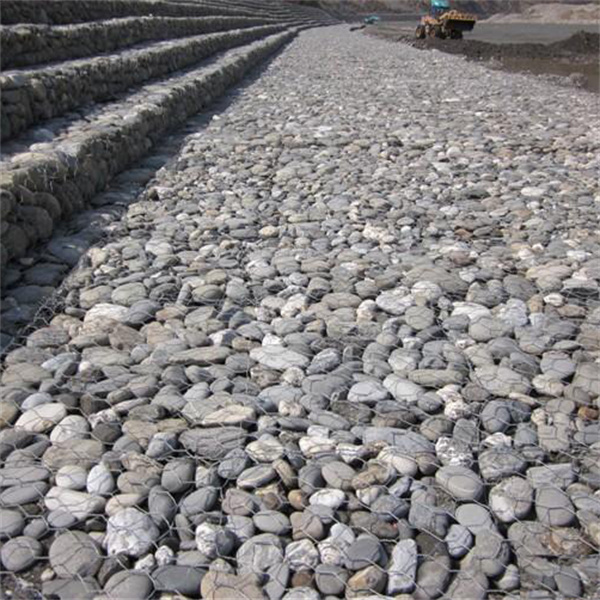Dec . 31, 2024 05:03 Back to list
Innovative Gabion Structures for Sustainable Architectural Design and Natural Landscaping Solutions
The Significance of Gabion Pillars in Modern Construction
In the ever-evolving field of construction and architecture, the incorporation of innovative materials and structures is vital to improving durability, aesthetics, and sustainability. Among these innovations, gabion pillars have gained prominence for their unique blend of functionality and environmental compatibility. This article explores the significance of gabion pillars, their construction process, advantages, and applications in modern infrastructure.
What are Gabion Pillars?
Gabion pillars are structures built using wire mesh cages filled with natural stones, rocks, or other materials. The term gabion comes from the Italian word gabbione, meaning big cage. Traditionally used in retaining walls and erosion control, the versatility of gabions has led to their adaptation as pillars and supports in various applications. These pillars provide exceptional stability and strength while harmonizing with the natural landscape, making them an appealing choice for landscape architects and engineers.
Construction Process
The construction of gabion pillars involves several key steps. First, wire mesh baskets are prefabricated, typically made from galvanized steel or PVC-coated wire to enhance durability and resistance to corrosion. Once the baskets are constructed, they are filled with a selected material, such as granite, limestone, or river stones, depending on aesthetic and functional requirements. After the baskets are filled, they are assembled and secured to create a sturdy pillar.
The flexibility of gabion construction allows for customization in size and shape. This adaptability makes gabion pillars suitable for various projects, from small garden features to large-scale infrastructure like bridges and roadways. Additionally, these pillars can be designed to integrate with landscaping, creating visually appealing structures that blend seamlessly with their surroundings.
Advantages of Gabion Pillars
gabion pillars

Gabion pillars offer numerous advantages over traditional construction materials. One of the most notable benefits is their sustainability. By utilizing locally sourced materials and natural stones, the environmental impact of gabion pillars is significantly reduced. Furthermore, the purpose of the pillars aligns with eco-friendly engineering practices, as they promote natural drainage, preventing water accumulation and erosion.
Another advantage is the cost-effectiveness of gabion pillars. They require minimal maintenance and can be constructed quickly, saving both time and financial resources during the building process. Additionally, the use of stones and rocks not only lowers material costs but also supports the recycling of natural resources, making gabions an economically viable option.
Gabion pillars also boast excellent structural integrity. The weight of the stones in the baskets contributes to their stability, making them an ideal choice for retaining walls, guardrails, and other structural supports. Their ability to withstand various environmental pressures, such as wind and water flow, enhances their applicability in diverse settings.
Applications in Modern Infrastructure
The implementation of gabion pillars extends beyond mere aesthetics; they play crucial roles in various infrastructures. In civil engineering, gabion pillars are widely used in riverbank stabilization projects to prevent erosion and protect waterways. The presence of gabion pillars aids in reducing flow velocity while allowing for natural vegetation growth, promoting biodiversity in the area.
Furthermore, gabion pillars have found their place in urban design. They can be employed in park benches, seating areas, or art installations, enhancing the visual appeal of public spaces. Their unique appearance often encourages community engagement, as people are drawn to the natural look of the stone-filled structures.
In conclusion, gabion pillars represent a remarkable intersection of functionality, sustainability, and aesthetic appeal in modern construction. Their versatility, cost-effectiveness, and durability make them an attractive choice for a variety of applications, ranging from civil engineering initiatives to urban landscaping projects. As the construction industry continues to prioritize environmentally friendly practices and innovative designs, gabion pillars will undoubtedly play a prominent role in shaping the landscapes of our future.
-
Visualizing Gabion 3D Integration in Urban Landscapes with Rendering
NewsJul.23,2025
-
The Design and Sustainability of Gabion Wire Mesh Panels
NewsJul.23,2025
-
The Acoustic Performance of Gabion Sound Barriers in Urban Environments
NewsJul.23,2025
-
Mastering the Installation of Galvanized Gabion Structures
NewsJul.23,2025
-
Gabion Boxes: Pioneering Sustainable Infrastructure Across the Globe
NewsJul.23,2025
-
Custom PVC Coated Gabion Boxes for Aesthetic Excellence
NewsJul.23,2025
-
Installation Tips for Gabion Wire Baskets in Erosion Control Projects
NewsJul.21,2025






